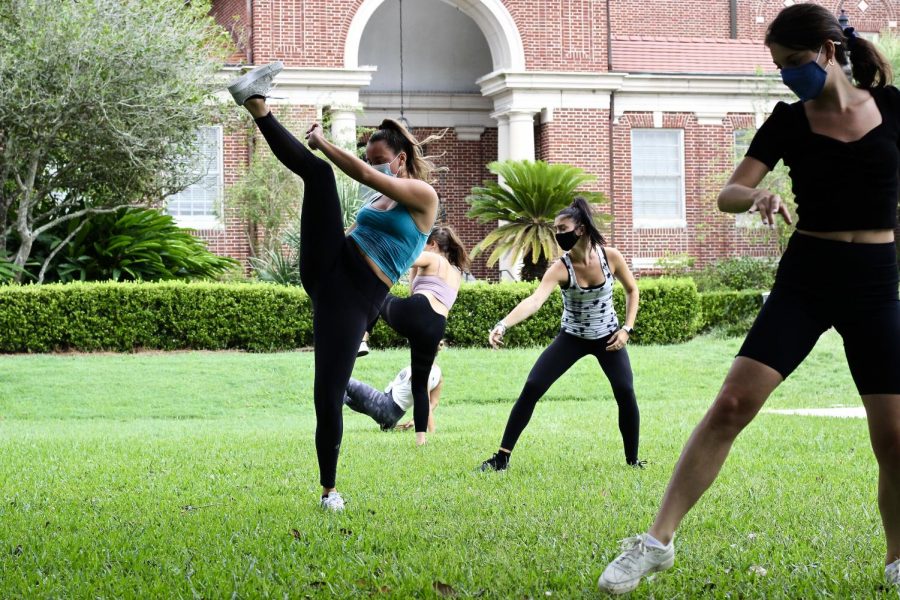Tulane dances differently during COVID-19
Tulane set up 13 outdoor classrooms spanning across the campus quadrangles to provide safe and socially distant means for professors to host in-person classes. The outdoor tents have chairs set up six feet apart, but for some subjects that do not involve sitting down, like dance classes, the adjustment to outdoor learning has been very different.
Two tents have been set up on the lawn in front of the Josephine Louise Residence Hall to accommodate non-traditional classes like art and dance. The dance classes require large amounts of space and have been held in places like McWilliams Hall, which contains studio-like rooms to accommodate the course. Because of social distancing guidelines, however, more space is needed and fewer students can be taught in those rooms utilized previously.
Because of the various tropical storms that New Orleans has faced this semester, the tents must quickly be taken down and put back up at a moment’s notice. Students and faculty have also had to battle with New Orleans’ humidity.
“Despite the heat [and] humidity in August [and] September, we know that through most of our fall and school year our campus is graced with gorgeous weather,” said Brian Edwards, the dean of the School of Liberal Arts.
Dance has been a part of the Newcomb-Tulane College curriculum since 1886, and while the tents will not remain after the COVID-19 safety mandates are lifted, some of the resulting modern teaching practices will.
“We are developing online live streaming and post-streaming productions and events that will probably remain after COVID-19,” said professor Barbara Hayley. “It is the sign of the times, but hopefully [it will remain] in addition to live theatre and dance.”
The tents and temporary classrooms have led to a loss of communal grass space such as the Newcomb Quadrangle. With little room inside, the current use of Tulane’s main meeting spot means there are fewer areas for students to interact with their peers safely.
“The outdoor temporary classrooms — particularly the tents for the arts — are solutions to our needs for social distancing and have nice aspects to them, but we miss, too, the open spaces of the quads and lawns,” Edwards said.
Not all of the dance classes are outside, but in order to accommodate the numerous classes every week, larger spaces had to be requested.
“Four classes are in Reily, which are huge, open, athletically-filtered spaces more like the size, for instance, of professional studios,” Hayley said.
Dancing is one field in particular that requires interaction between student and professor, but with masks and a six-foot distance between each person, this semester has been more lonely, Hayley said.
“The novelty of taking a dance class as a soloist in one’s living room, either classical ballet or modern technique, is wearing off and not reflective of the [department’s] objectives. It is isolating,” she said.
Your donation will support the student journalists of Tulane University. Your contribution will allow us to purchase equipment and cover our annual website hosting costs.



